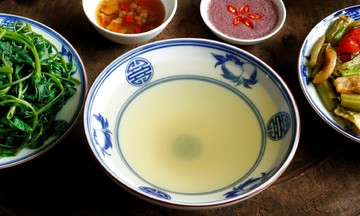Kusari-doi (鎖樋), meaning "chain gutter," is a unique architectural solution from Japan. Instead of channeling water through enclosed pipes, this system allows rainwater to flow visibly along chains, creating a dynamic visual and auditory display during rainfall.
Transforming function into art
The most obvious benefit of Kusari-doi is its aesthetic value. They are considered outdoor sculptures, turning simple drainage into a refined architectural feature.
The materials used are diverse, with copper being the most common due to its durability and the attractive green patina that forms over time. Aluminum, stainless steel, and glass are also used. Kusari-doi designs range from simple chains to elaborate arrangements of cups shaped like lotus flowers, leaves, or geometric figures, allowing homeowners to choose a style that complements their overall architecture.
How chain drains work in Japan. Source: CHUN-YU-YANG
The sound of tranquility
In Japanese culture, the sounds of nature, especially flowing water, are highly valued for their relaxing effect. Kusari-doi contributes to this experience by creating a gentle, rhythmic trickling sound, replacing the noise of rainwater hitting metal or plastic pipes.
This sound not only brings a sense of peace to gardens and patios but is also believed to bring positive energy according to feng shui principles, harmoniously guiding the flow of fortune.
 |
The Japanese use chain drains (Kusari-doi) for effective water drainage. Photo: PIXTA |
The Japanese use chain drains (Kusari-doi) for effective water drainage. Photo: PIXTA
Effective and sustainable
Beyond their aesthetic and spiritual value, Kusari-doi are also an effective and low-maintenance drainage solution.
Their operating principle relies on surface tension, which allows water to adhere to the chains and flow down in a controlled manner, minimizing splashing. This open design makes the chains less prone to clogging from leaves or debris, and cleaning is much easier than with traditional gutters.
Kusari-doi are also environmentally friendly. The rainwater is often channeled into collection basins, wooden barrels, or miniature landscapes below. This water can then be reused for watering plants, promoting water conservation and resource management.
Originating in ancient temples and shrines, Kusari-doi today exemplify the Japanese philosophy of harmoniously combining function, aesthetics, and respect for nature, transforming the ordinary into something special.
Minh Phuong (From Japan Experience)












